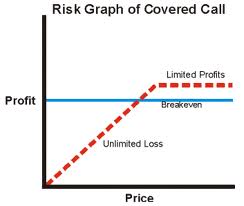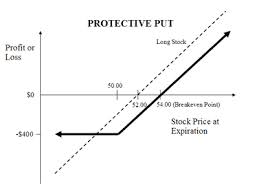Tags
Biosciences, Breakeven, Call, Covered Call, Cytokinetics, Gain, Income, Invest, Investing, Loss, Options, Premium, Price, Profit, Protective Put, Put, Risk, Stock
Options Week 2
Continuing with options this week I will be showing how to use a covered call and how to use a protective put. These are two options that combine one option with owning the stock. They are very conservative options and can be used in correlation with a long term investment in a stock.
Covered Call-
I will be performing a covered call on Neurocrine Biosciences Inc. Performing a covered call involves selling a call on a stock that you also own shares of. In doing this, investors are able to add profit to their portfolio by means of a premium. In doing this they lessen their potential loss if the stock price is to go down. However, they also limit their maximum gain as every increase in stock price will gain money from the ownership of the stock but will lose money based on the sale of the call. Because of this, covered calls are optimal to do short term when you believe that the stock price will stay semi stagnant and do not expect large increases in the price. I will be performing the covered call on Neurocrine because although it is a stock that I believe has room for growth, I do not see it growing largely within the next couple of months.
For this example, we will assume I own 1000 shares of Neurocrine and say that it is at a current stock price of $14.00 (in reality is around $13.91). To complete the covered call, I will sell 10 contracts (1000 calls) of an August 2014 call at the price of $14 for $1.60. This gives me a $1600 dollar premium paid to me right now. Based on this situation I can then perform an analysis to see how I would fare based on the price at the expiration date. This lowers my maximum possible loss if the stock were to hit $0 to $12400 rather than $14000. My break-even point would be $12.40 meaning the stock could decrease by $1.60 in price and I would still see a profit. One drawback to this however, is that if the stock were to increase to $17 I would only realize a gain of $1600 (the premium) as compared to having a gain of $3000 if I had just owned the stock. If the stock is likely to remain stagnant, or there is a possibility that the stock could decrease in price, a covered call is a smart and conservative option.
Protective Put –
A protective put has the opposite effect of a covered call. A protective put is buying a put when you also own shares of the stocks. By doing so, the investor has the opportunity to “protect” themselves from a large loss while also keeping the opportunity to profit if the stock goes up. In some ways it is insurance on your portfolio or stock. This decreases the risk to only the premium you pay. You would perform a protective put when you believe that the price will rise, but would like to protect yourself in case it is to fall.
I will be performing a protective put on Cytokinetics Incorporated. The company has the potential to be very successful and even has a price target of $10 for the year. However, their price depends massively on their results and if they have failures in their drug trials, they could decline in price greatly. Because of this, I would like to decrease my risk and will do so from the usage of a protective put. For this situation, we will say I own 1000 shares of the stock at a price of $5 (4.71 in reality) To protect myself I will buy 10 contracts of a July Put (1000 puts) at $5 for $0.6. These puts will cost me a premium of $600. This makes my largest possible loss $600 rather than the potential $5000 I could lose without the protective put. It also does not limit my maximum gain as the gains would be exactly the same with the $600 dollar premium subtracted from them. If the price were to hit the price target of $10, I would gain a profit of $4400 compared to $5000. However, if the price were to drop dramatically due to negative drug news, I would be protected from massive loss. A protective put is very useful to protect yourself from a drop in the stock price.

